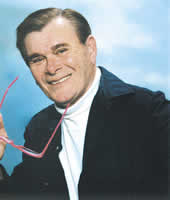| |
 |
| Paper Doll Author Tom Tierney |
| Artist Tom Tierney wrote and illustrated Dover books for over 30 years. His best-known and most popular creations are paper dolls of historical figures, movie stars, and fictional characters that model the fashions of bygone eras. Dover publishes over 150 of his paper doll collections, plus coloring books and other works that he has authored. |
| Several years ago we interviewed Mr. Tierney about what it's like to make a living as an artist, and how he came to find a niche as the preeminent author of paper dolls. We hope you enjoy reading what he had to say. |
|
 |
|
| My Work Is My Pleasure: A Talk with Tom Tierney |
| Q: You're a native of Texas, but you came to New York to make your fortune? |
| Tom: Yes, for a fashion illustrator, New York was the only place to be. In the 40s, 50s, and 60s, it was an illustrators' mecca. It's hard to believe now, but there were 30-some daily newspapers, and all of them used hand-drawn illustrations for their advertisements. I worked on a freelance basis for every major store in Manhattan—Macys, Gimbels, Lord & Taylor, and Bonwit Teller, among many others. There were so many opportunities that I had as much work as I wanted and more. My parents came up from Texas and lived with me for about 15 years. My father acted as my business manager, which freed me up to concentrate on my work. It's pretty unusual for a family to have an entire house to themselves in the middle of Manhattan, but we were fortunate enough to live in a nineteenth-century brownstone on the West Side, near the American Museum of Natural History. |
| Q: Your first paper doll book was a gift for your mother, wasn't it? |
Tom: I used to have Christmas parties at the brownstone, and the first year that my parents came up to New York, I wanted to have an especially festive event. I guess I was feeling a little guilty about taking Mom away from home. She'd kept the paper dolls of her girlhood all those years, so I decided to make her a little private paper doll collection featuring her favorite actors, Clark Gable and Jean Harlow.
Oh, well, she was thrilled to have something unique and personal. She often showed them to friends (or to anyone else who'd look—"See what my son made for me!"). One of those friends happened to be a literary agent who said, "I think you've got something there. Could you do more?" Could I? |
| Q: How did your association with Dover began? |
| Tom: Prentice-Hall published my Thirty from the 30s paper doll collection in 1976, and one of Dover's artists admired it and brought it to the publisher's attention. My first Dover book, Glamorous Movie Stars of the Thirties, appeared in 1978. I think it's still in print. |
| Q: It certainly is. Your books provide lots of text with background on the characters and their costumes, so your research must be extensive. What's your method? |
Tom: People always ask about that, and my answer's always the same: Just like anyone else with a research project, I roll up my sleeves and go to work.
After my parents retired and moved back to Texas, we sold our brownstone and I moved upstate to the country home we've had for many years, a 40-acre farm. In addition to the house, the property has four barns, one of which is huge and serves as a vast library. I've acquired a sizable collection of reference books over the years, so there are shelves and shelves of them out there in the barn. I'm on the board of directors for the local library, so I can feel quite free to use their resources. And when I'm looking into historical fashions, I go into Manhattan to use the library at the Fashion Institute of Technology (they know and love me there!), or I take a look at the Metropolitan Museum of Art's costume collection.
When I'm working on a movie star book, I often get copies of the movies and have a little film festival. Sometimes I freeze a frame so I can do a sketch of a particular dress or outfit. |
| Q: Is there a fashion era where you feel especially at home? |
Tom: In terms of the execution, modern styles are far easier to draw—there's so much less detail. In the Renaissance and medieval and Gothic periods, they put everything they owned into their dresses, with an abundance of embroidery and lace and brocade. Some of the modern outfits can be sort of complicated, with feathers and spangles and such, but they're really much easier to render.
I couldn't choose a particular era as my favorite; I like them all! And by the time I'm finished profiling a particular personality, I feel like I actually know her. After so many hours of study, I come to recognize her favorite colors and develop an understanding of her body language. It's kind of eerie. Sometimes with the older, long-departed subjects, I feel they're out there somewhere, keeping an eye on my work—and if they like it, their books will be a popular success! |
| Q: Does creating fictional figures allow you to focus more on clothing styles rather than personalities? |
| Tom: I'm a glutton for punishment, so the most difficult assignments turn out to be the ones I like best. For instance, I had the opportunity to take a new approach to an old subject with my forthcoming book, A Midsummer Night's Dream Fairy Paper Dolls. It was inspired by the fairy characters in Shakespeare's play, who are often depicted as females. But women didn't appear on the Elizabethan stage, you know, and in the course of the play, they're addressed as "Mr. Cobweb" and "Mr. Mustardseed," so at least some of them were supposed to be men. So, I've included male and female fairies among the original designs in my book. Also, the play takes place in an enchanted wood near ancient Athens, so the fairies usually wear Greco-Roman costumes. That struck me as odd, since Shakespeare and his contemporaries probably didn't have a very clear image of how the ancients dressed. There certainly weren't any costume museums for them to visit, after all. I put the fairies in Elizabethan styles—which are traditionally rather heavy, so I rendered them as sheers, giving them a lightweight, floating look. Hopefully, people will see this new book as not just about fairies, but as offering insights into drama and theater. |
| Q: Do you think that people tend to buy your books as collectors' items or to cut out and play with the dolls? |
Tom: Apparently, I'm a collectible! Dover's done very well in circulating my books around the world. Dover's founder, the late Hayward Cirker, was a wonderful mentor. He was willing to listen to ideas that sounded just crazy to everyone else—Pope John Paul II Paper Dolls, for example. I found the pope was really interesting, even aside from his official role—just think, he was an avid skier! Mr. Cirker said, "I'll let you do it, but you can't show him in his underwear." So I didn't. The doll is modestly dressed in a plain white cassock.
There's a curious story connected with that book. A certain lady chanced to pick up a copy while she was on her way to Rome. It so happened that she managed to meet the pope at a public audience, and when her turn in line came, she produced the book and asked for an autograph. The pope flipped through it, seemed amused, and asked where he could get a copy. Then he blessed the book! I signed a dozen copies for him, and Mr. Cirker had them sent off to the Vatican. Perhaps they're still there! |
| Q: You regard paper dolls as an art form, don't you? |
Tom: I don't mean to boast, but I'm rather proud of having made them into something more than just kids' stuff. My books can be a way to discover things that you weren't taught in school. And I like to think that they bring their subjects to life for readers, just the way they do for me when I work on them.
Sometimes I receive very touching letters, especially from students. Recently, I heard from a young man who said that he wanted to thank me for his career. It seems his sister had given him one of my books when he was a child, and he was so taken with my art that he studied and imitated my style. He ended up going to art school, getting a degree, and finding a job as a corporate artist—and he gave me credit for guiding him toward what turned out to be a very rewarding choice of professions. I must say, it's been a satisfying career for me, so if I can help influence young artists, then my work is all the more worthwhile. They started out as a lark, but when the jobs for fashion illustrators began to decline, the paper dolls stepped in and gave me a full-time living. As in any profession, you have to keep ahead of the crowd and learn how to adapt to changing times. I produce one Dover book every month, on the average. It's a lot of work—but I enjoy it, so my work is my pleasure. |
|
| |
| To browse all of our books by Tom Tierney, click here. |
|
| |
| |
|